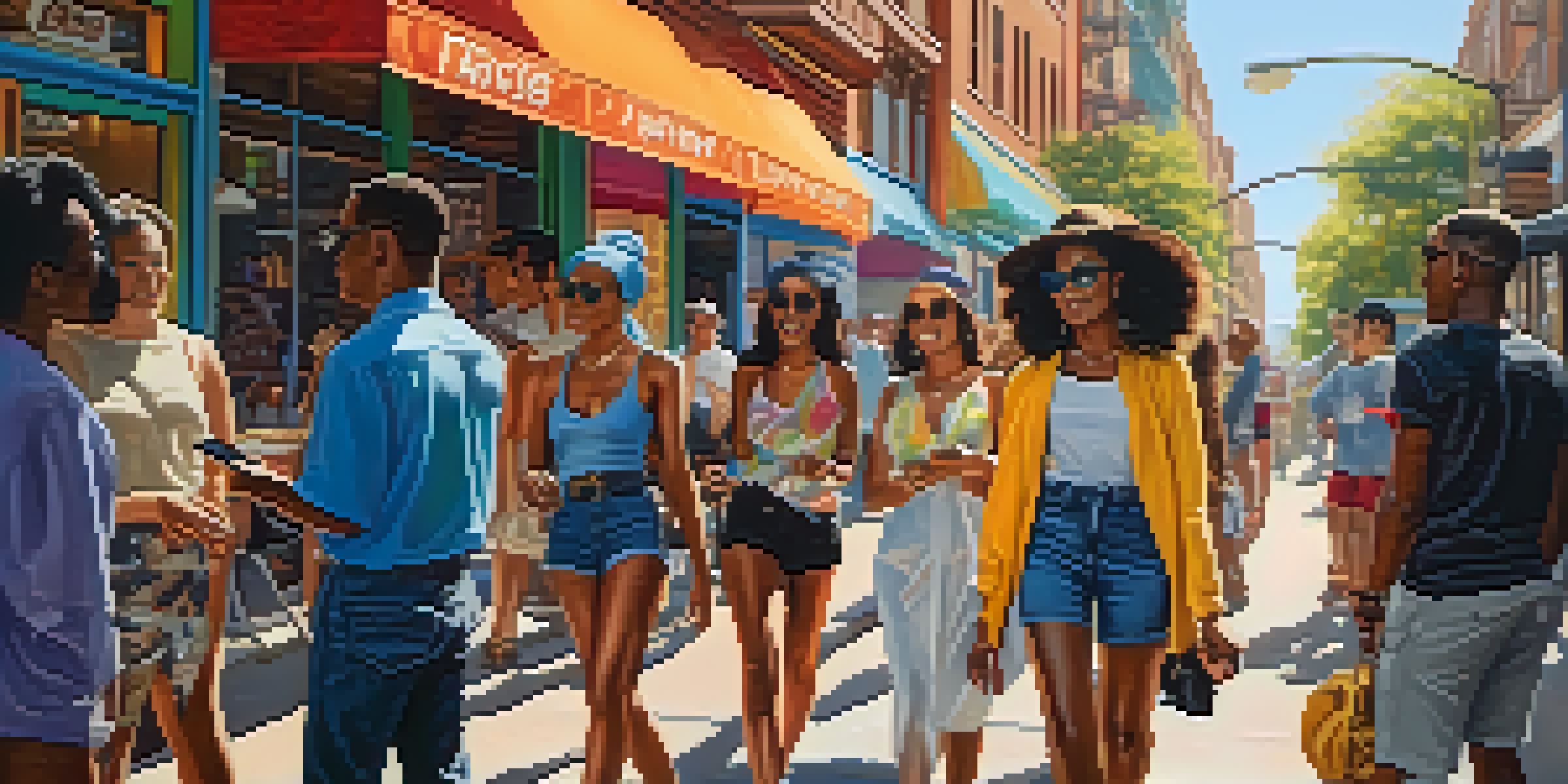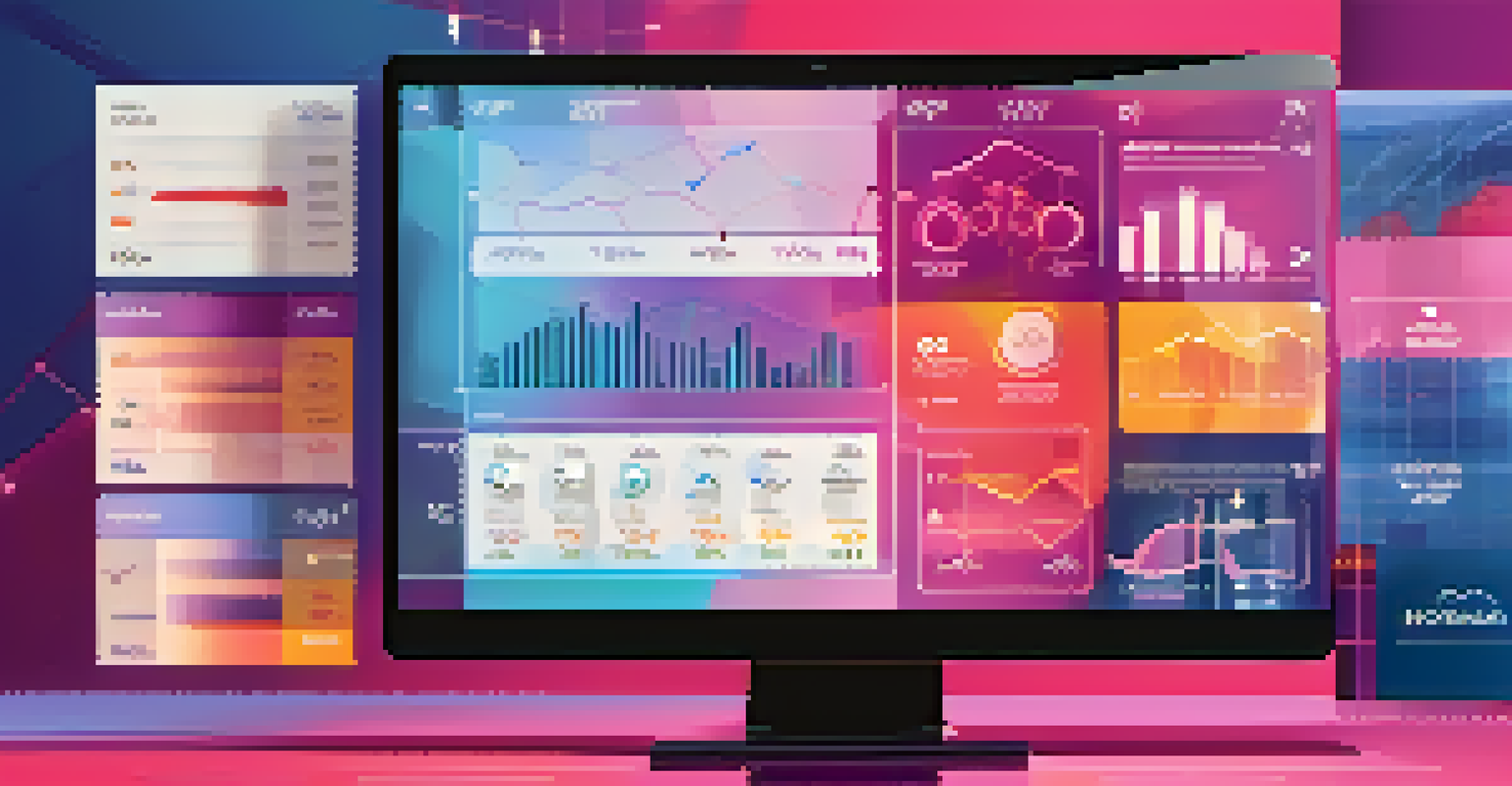How Social Media Influences Fashion Trend Forecasting Tools

The Rise of Social Media in Fashion
In recent years, social media has become a powerful platform for fashion. Brands and consumers alike are using platforms like Instagram and TikTok to showcase styles and connect. This shift has made fashion more accessible, allowing trends to spread rapidly across the globe.
Fashion is the armor to survive the reality of everyday life.
Before the digital era, fashion forecasting relied heavily on runway shows and industry insiders. Now, anyone with a smartphone can share their unique style, influencing the masses. This democratization of fashion has changed how trends are perceived and adopted.
Social media allows for immediate feedback on fashion choices, creating a dialogue between brands and consumers. As influencers showcase their favorite pieces, followers can instantly react, making fashion more interactive and engaging than ever.
Influencers as Trendsetters
Influencers play a crucial role in shaping fashion trends today. Their ability to reach vast audiences means that a single post can spark a trend overnight. This has led to a new era where influencers act not just as promoters but as trendsetters.

Many brands now partner with influencers to launch new collections, knowing their followers trust their recommendations. This strategy not only boosts visibility but also provides insights into what styles resonate with consumers. The influencer's personal style often dictates what becomes popular.
Social Media's Fashion Impact
Social media has democratized fashion, allowing anyone to influence trends and connect with brands.
However, not all influencers have the same impact. Micro-influencers, who have smaller but more engaged followings, can sometimes create stronger trends than their mega counterparts. Their authenticity often leads to a more trusted relationship with their audience.
Data-Driven Trend Forecasting
Fashion forecasting tools have evolved to include data analytics from social media. By analyzing likes, shares, and comments, brands can identify emerging trends before they become mainstream. This data-driven approach enhances the accuracy of trend predictions.
In this digital age, the consumer is king, and social media is the direct line to their throne.
For example, platforms like Google Trends and social listening tools allow brands to see which styles are gaining traction. This information helps fashion houses plan their collections more effectively, aligning their offerings with consumer demand. It's all about being ahead of the curve.
As technology continues to advance, brands will likely rely even more on these analytics. The integration of AI and machine learning in trend forecasting could lead to even more precise predictions based on social media behavior.
The Speed of Trend Cycles
Gone are the days when fashion trends took months or years to develop. Social media has accelerated the trend cycle, with styles popping up and fading away in the blink of an eye. This rapid pace creates both opportunities and challenges for fashion brands.
Brands must now be agile, able to adapt quickly to the latest trends. Those that can pivot their strategies in real-time often find success, while others may struggle to keep up. The key is to stay connected to social media conversations.
Influencers Shape Fashion Trends
Influencers serve as powerful trendsetters, using their reach to launch styles that resonate with audiences.
This speed has also influenced consumer behavior. Shoppers are now more likely to purchase items on a whim, driven by what they see online. This has shifted the focus to fast fashion, which often prioritizes quick turnarounds over sustainability.
Consumer Engagement Through Social Media
Social media has transformed the way consumers engage with fashion brands. Instead of passively consuming content, consumers now actively participate by sharing their own styles and opinions. This two-way interaction fosters a sense of community around brands.
Many brands have embraced this engagement by creating campaigns that encourage user-generated content. For instance, hashtag challenges on TikTok invite users to showcase their fashion interpretations, amplifying brand visibility. This strategy not only boosts engagement but also builds brand loyalty.
Furthermore, the comments and feedback received online provide invaluable insights into consumer preferences. Brands can better understand their audience's desires, tailoring their collections to meet those needs more accurately.
Sustainability Influenced by Social Media
Social media has also amplified the conversation around sustainability in fashion. With increased awareness of environmental issues, consumers are demanding more eco-friendly practices from brands. This shift is influencing trend forecasting tools to incorporate sustainability metrics.
For example, brands that prioritize sustainable materials or ethical production methods are gaining popularity online. Social media campaigns that highlight these values resonate with consumers, helping to drive trends toward more responsible fashion choices.
Sustainability Drives Consumer Choices
Social media amplifies the demand for sustainability in fashion, influencing brands to adopt eco-friendly practices.
As consumers advocate for sustainability, brands are responding by showcasing their eco-friendly initiatives on social media. This creates a feedback loop where consumer preferences directly impact how brands forecast and develop future trends.
The Future of Fashion Trend Forecasting
Looking ahead, the relationship between social media and fashion trend forecasting will only deepen. As technology advances, we can expect more sophisticated tools that analyze social media data in real-time. This will empower brands to make more informed decisions about their collections.
Moreover, as virtual reality and augmented reality become more integrated into shopping experiences, the way trends are forecasted may change. Consumers might interact with fashion in more immersive ways, further shaping what becomes popular.

Ultimately, the continued influence of social media will challenge traditional fashion forecasting methodologies. Brands that embrace this change and adapt their strategies will be best positioned to thrive in the ever-evolving fashion landscape.